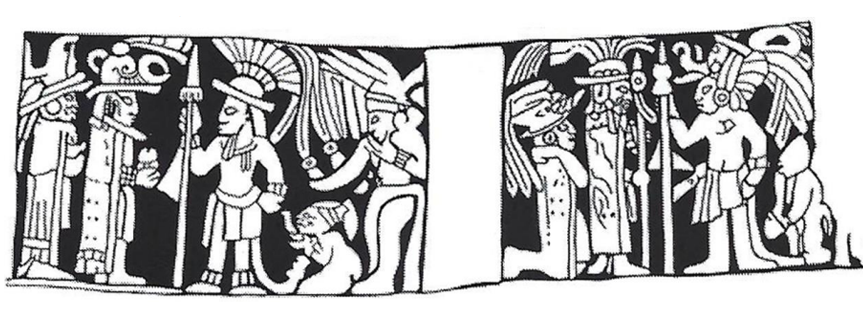Field Trip

University of Houston students have a unique opportunity to participate in the Caracol Archaeological Project. This is a working archaeological project, not a field school. A full semester of course credits may be taken through the University of Houston during the Spring semester, while in the field (enrollment is limited to those students actually going to Caracol and consist of ANTH 4380, ANTH 4382, ANTH 4391, and ANTH 4392).
Caracol is a Classic Period (A.D. 300-900) Maya archaeological ruin located in the west-central
portion of Belize, Central America. It is the largest site in Belize and contains
the tallest Precolumbian architectural complex in that country; Caana rises 43 meters
above the jungle floor.
The thirty-eighth season of the Caracol Archaeological Project will be undertaken from late January through
late March 2024. While some staff may go to Belize in January to set-up camp and project
operations, the majority of the crew will remain in Houston until the very beginning
of February when formal excavations will be resumed. There will be a scheduled orientation
and archaeology lab work at the Univ. of Houston before the field season.
Investigations at Caracol consist of mapping, excavating, and interpreting the remains of a huge ruined city. Plans for the 2024 field season include working in the outlying settlement and excavating in several ancient Maya residential groups.
Living conditions at Caracol are very different than that in the U.S. Trips for supplies and mail to
Cayo, the nearest town, usually take place approximately once a week. Camp is made of wood and thatch huts. There is no running water. We do, however, have
electricity in the evenings from a generator, but there is no access to internet.
All meals are prepared on-site. We eat Belizean food; a typical meal consists of rice
and beans with stewed beef or stewed chicken and cabbage salad. Living in the jungle has its pleasures and drawbacks. We are surrounded by
abundant wildlife; this includes birds, monkeys, and tropical plants, but also insects
and snakes. Boots, long sleeves on shirts, long legs on pants, and insect repellent
are required.
Student Expenses: Students are responsible for course fees at the University of Houston and for their airfare to and from Belize; supplemental emergency medical and evacuation insurance should be available through the university. Air flights must be coordinated with the project in order to have appropriate pick up and departure (transportation to Caracol from the airport is ca. $500 by taxi). Food and lodging in Belize is normally covered by the project. Travel within Central America after the end of the project is also solely up to each individual, but the project would ask students to travel together, if possible, and for a copy of all travel plans until your return to Texas.
All questions regarding participation in the Caracol Archaeological Project should be directed to Dr. Arlen Chase. Interested students should set up an appointment with Dr. Chase (afchase@central.uh.edu) to discuss their possible participation in the project. It is suggested that students interested in participating also visit www.caracol.org to familiarize themselves with the project. The best preparation for field activities consists of volunteering in the Maya Archaeology Laboratory. Volunteering in the lab, however, is not limited to students participating in the Belize field program; students interested in volunteering in the Maya lab should also contact Dr. Chase.